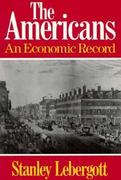12. Describe & graphically illustrate how a change in demand will impact the rent on land, p. 349 PLZ HELP!!!!!!!!!
CHAPTER 18 Rent, Interest, and Profit 349 Economic prot is a form of economic rent that you are already familiar with. Eco- nomic prot is an economic rent because it is the amount of prot in excess of the nor- mal rate of prot that reflects the actual opportunity cost of entrepreneurship. The most famous example of eco- nomic rent, however, is the money received by landowners for allowing others to use their land. Since land is a free gift of nature and has no production cost. it also has no opportunity cost. That implies that any amount of money received by land- owners (from, for example, tenant farmers) is an economic rent, since the payment they receive is entirely in excess of the opportunity cost of providing land (which is zero since it has no production cost). Let's examine this idea and some of its implications through supply-anddemand analysis. We first assume that all land has a single use, for example, growing wheat. We assume, too, that all land is of the same grade or quality, meaning that each arable (tillable) acre of land is as produc- tive as every other acre. And we suppose that land is rented or leased in a competitive market in which many producers are demanding land and many landowners are offering land in the market. in Figure 18.1, curve S represents the supply of arable land available in the economy as a whole, and curve JD2 represents producers' demand for use of that land. As with all economic resources. the demand for land is a derived demand, meaning that the demand for land is derived from the demand for the products that land helps to produce. Demand curves such as 02 reflect the marginal revenue product (MRP : MP x P) of land. The curve slopes downward because of diminishing returns (MP declines) and because. for producers as a group. additional units of land result in greater output and thus lower output prices (Pis less). Land rent (dollars) Dd FIGURE 18.1 The determination nl land rent. Because the supply S of land {and other natural resources] is perfectly inelastic. demand is the sole active determinant of land rent. An increase in demand from 02 to D' or a decrease in demand from D2 to D: will cause a consid- erable change in rent from R210 R. in the first instance and from R2 to Rs in the second. Butthe amount of land supplied will remain at Lu. If demand is very weak (.0) relative to supply. land will be a "free good." commanding no rent. EQA Perfectly Inelastic Supply The unique feature of our analysis is on the supply side. For all practical purposes, the supply of land is perfectly inelastic (in both the short run and the long run). as reflected in supply curve 5'. Land has no production cost; it is a free and nonreproducible gift of natme. The economy has only so much land, and that's that. Of course, within limits any parcel of land can be made more usable by clearing, drainage, and irrigation But these are capital improvements and not changes in the amount of land itself. Moreover, increases in the usability of land affect only a small frac- tion ofthe total amount of land and do not change the basic fact that land is xed in supply. Equilibrium Rent and Changes in Demand Because the supply ofland is fixed, demand is the only active determinant ofland rent. And what determines the demand for land? The factors we discussed in Chapter 16: the price of the prod- ucts produced on the land, the prmiuctivity of land, and the prices ofthe other resources that are combined with land. If demand is D}. as we have suggested, the equilibrium rent will be R2. The quantity of land Ln that producers wish to rent will equal the quantity of land available (also Lu). But ifthe demand for land in Figure 18.1 increases from B2 to DI, land rent will rise from R2 to RI. On the other hand. ifthe demand for land declines from L'I2 to D}. [and rent will fall from R2 to R3. Finally. ifthe demand for land is only 1}\" land rent would be zero. In this situation, land would be a free good a good for which demand is so weak relative to supply that an excess supply ofit occurs even ifthe market price is zero. In Figure 13.], we show this excess supply as distance .6 a at rent of zero. Land was essentially a free good in the free-land era of US. history. The ideas underlying Figure 18.1 help answer one of our chapter-opening questions. Land prices and rents are so high along the Las Vegas Strip because ofthe tremendous demand for that land. It is capable ofproducing exceptionally high revenue from gambling, lodging and entertain- ment. In contrast the demand for isolated land in the middle of the Nevada desert is highly lim ited because very little revenue can be generated from its use. (It is an entirely different matter. of course, if gold can be mined from the land, which is true ofsome isolated parcels in Nevada)








